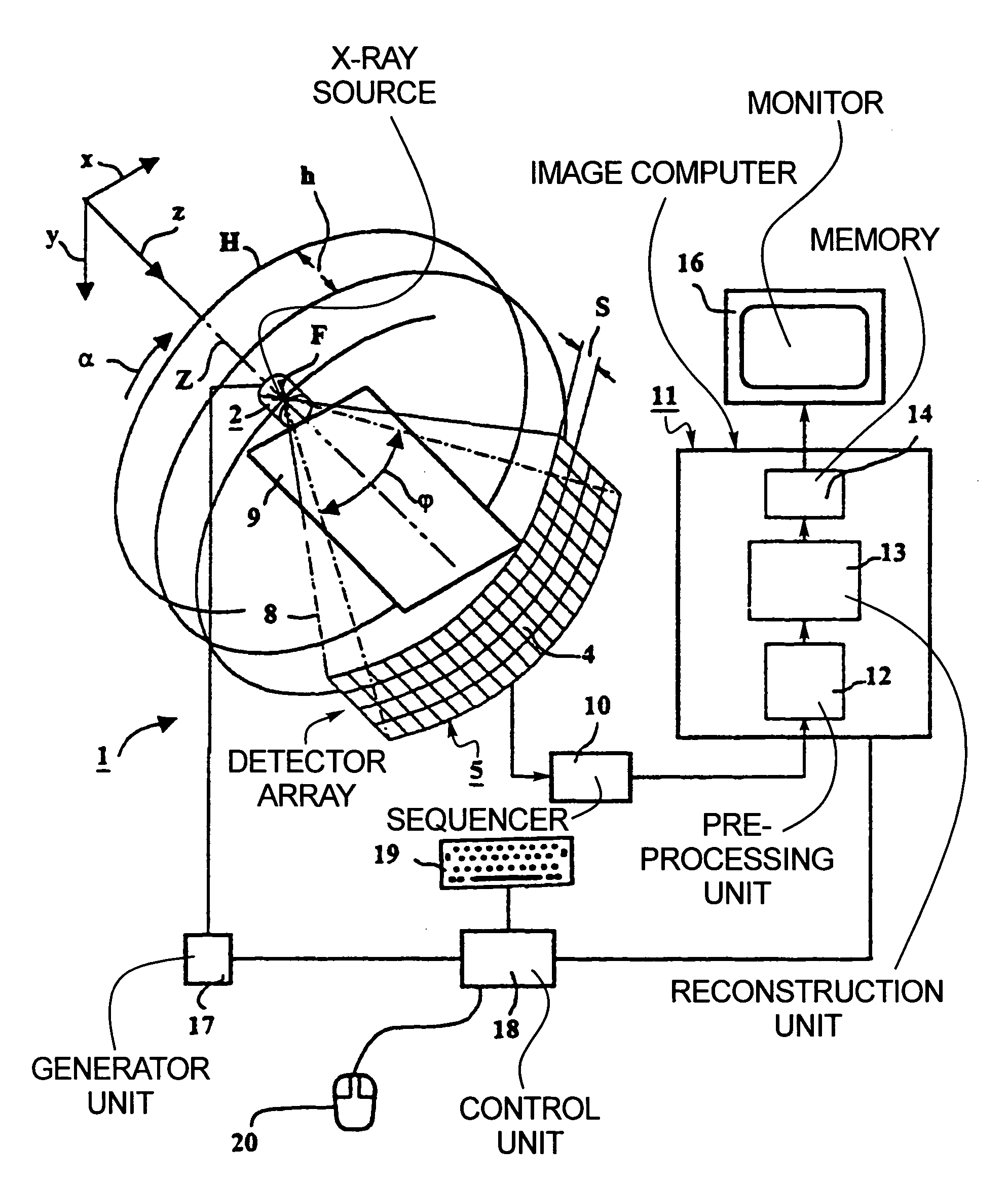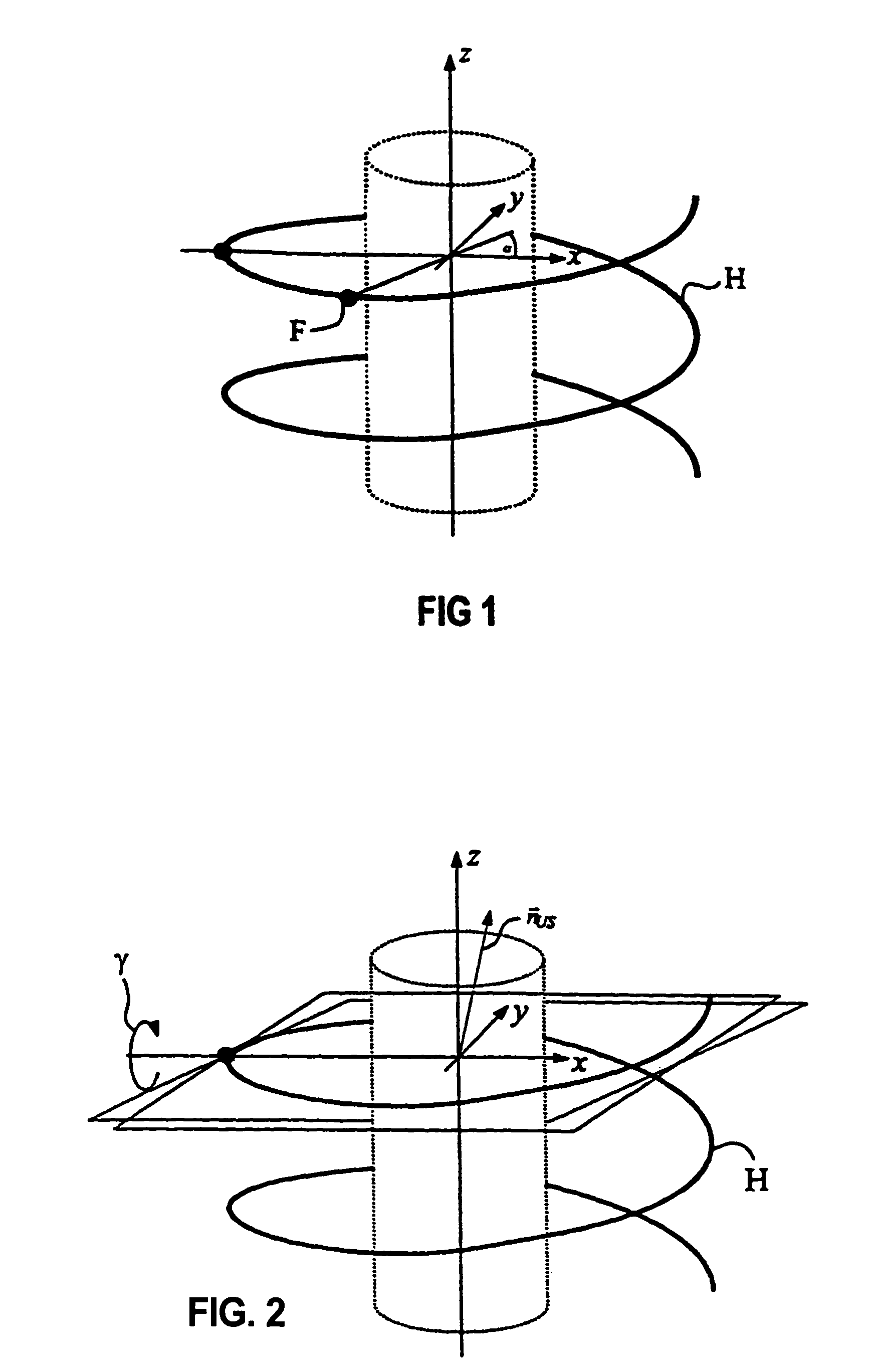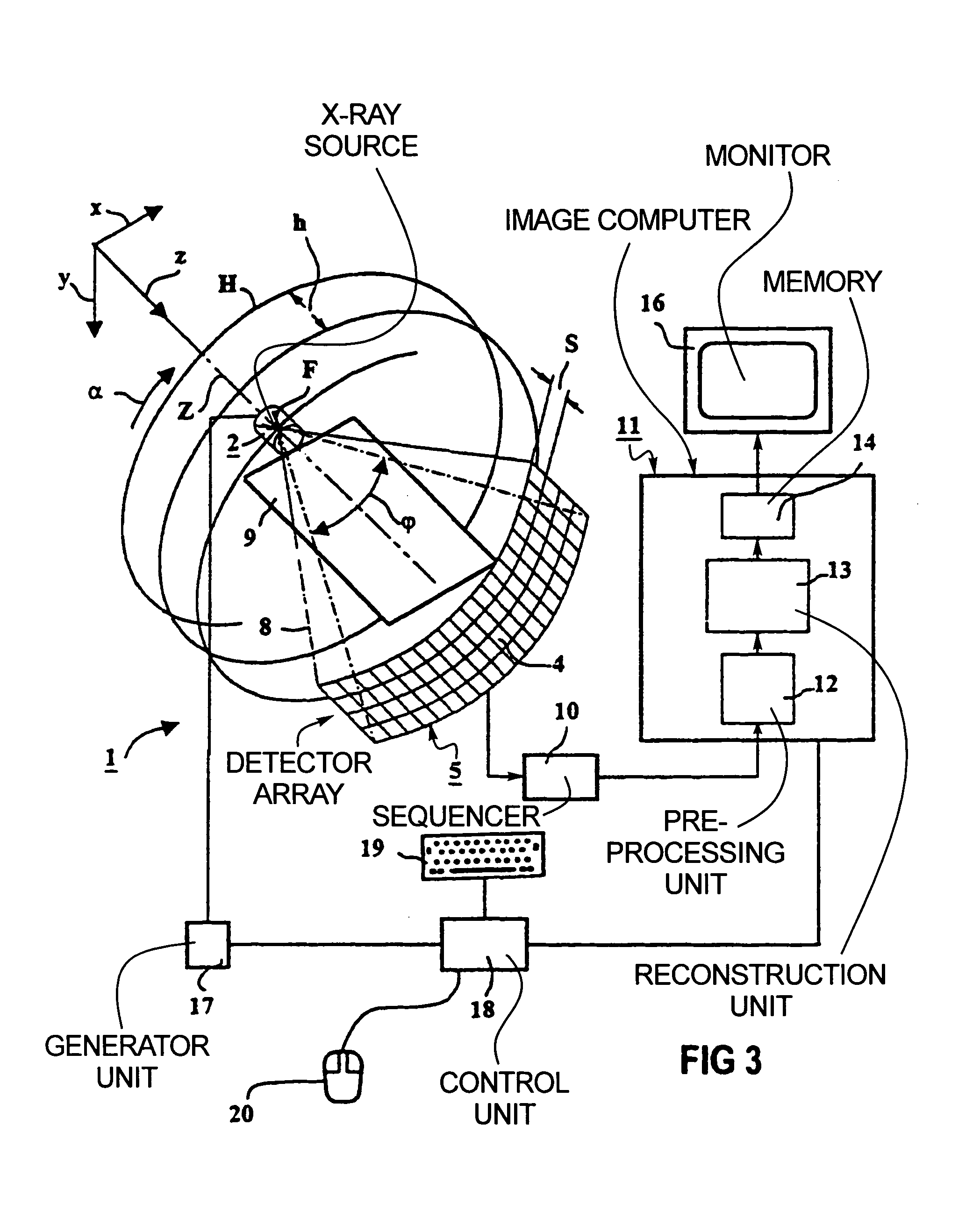Method and apparatus for spiral scan computed tomography
a computed tomography and spiral scan technology, applied in tomography, instruments, applications, etc., can solve the problems of inability to adapt the image plane adequately well to the spiral path, inability to optimize the detector area available, and inability to apply the radiation dose to the patient for image acquisition (detector and thus dose utilization)
- Summary
- Abstract
- Description
- Claims
- Application Information
AI Technical Summary
Benefits of technology
Problems solved by technology
Method used
Image
Examples
Embodiment Construction
[0051]FIGS. 3 and 4 show an inventive multi-slice CT apparatus of the third generation suitable for the implementation of the inventive method. The measurement arrangement 1 thereof has an x-ray source 2 with a source-proximate radiation diaphragm 3 (FIG. 4) and a detector array 5 fashioned as a planar array having a number of rows and columns of detector elements—one of these is referenced 4 in FIG. 3—and having a detector-proximate radiation diaphragm 6 (FIG. 4). The x-ray source 2 with the radiation diaphragm 3 and the detector array 5 with the radiation diaphragm 6 are mounted to a live frame 7 also referred to below as gantry, as shown in FIG. 4. These components are disposed opposite one another such that a pyramidal x-ray beam that emanates from the x-ray source 2 during operation of the CT apparatus, and is gated by the adjustable radiation diaphragm 3 (whose edge rays are referenced 8) is incident onto the detector array 5. The radiation diaphragm 6 is set, with respect to ...
PUM
 Login to View More
Login to View More Abstract
Description
Claims
Application Information
 Login to View More
Login to View More - R&D
- Intellectual Property
- Life Sciences
- Materials
- Tech Scout
- Unparalleled Data Quality
- Higher Quality Content
- 60% Fewer Hallucinations
Browse by: Latest US Patents, China's latest patents, Technical Efficacy Thesaurus, Application Domain, Technology Topic, Popular Technical Reports.
© 2025 PatSnap. All rights reserved.Legal|Privacy policy|Modern Slavery Act Transparency Statement|Sitemap|About US| Contact US: help@patsnap.com



